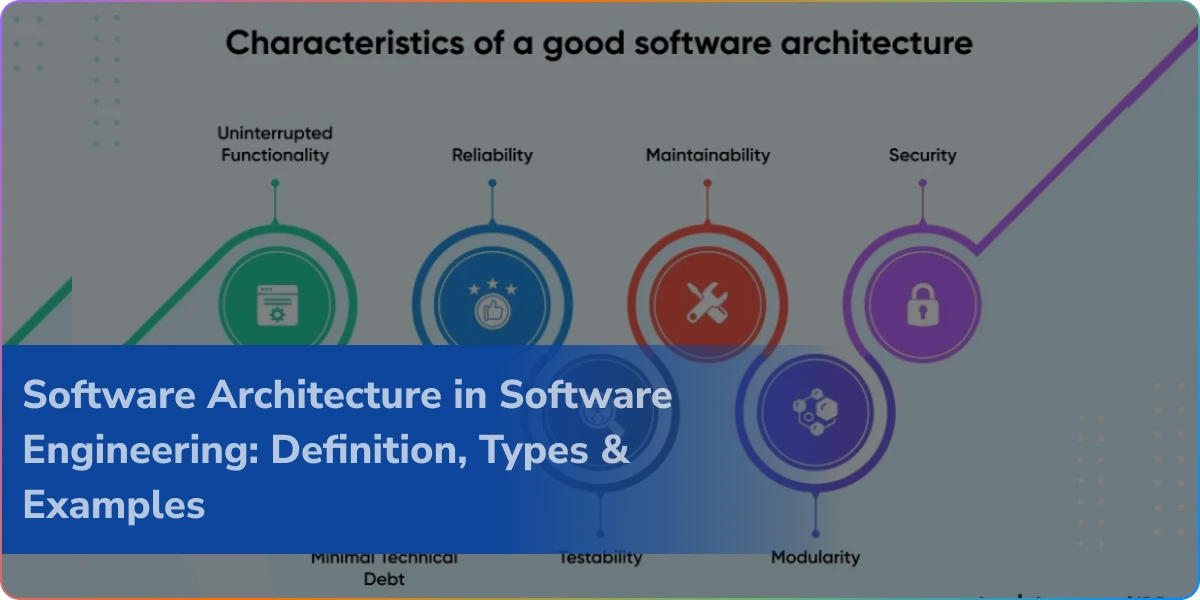In the current web development scenario, it is becoming crucial for developers to choose the correct tech stack for building scalable and interactive applications. Considering the available options, one of the most powerful and flexible combinations among them is Laravel React. This dynamic and robust duo enables developers to leverage the backend capabilities of Laravel along with React’s advanced frontend capabilities.
In this blog, we’ll guide you on how Laravel with React can help build robust web applications, including the architecture, key benefits, real-world use cases, and how to integrate both frameworks seamlessly. Whether you’re a startup, agency, or an enterprise, knowing how to build apps using React with Laravel can incredibly improve your development productivity.
Why Use Laravel and React Together?
Combining Laravel and React offers the best solution from both the frameworks:
- Laravel can be smartly used for routing, authentication, database management, and API creation.
- React can be leveraged as a responsive and modern frontend with component-based architecture.
Now, let us have a glance at how this stack works so well:
1. Separation of Concerns
Laravel acts as the backend API while React handles the frontend. This separation renders your app more modular and easier to maintain.
2. Scalable Architecture
Developers can scale frontend and backend systems separately with Laravel with React JS.
3. Developer Efficiency
Blade templates in Laravel and reusable components in React enable easy prototyping and iteration.
4. Active Ecosystems
Large communities of developers, learning materials, and enormous third-party libraries are available for both Laravel and React.
Laravel React Architecture: How it Works
Here’s what a standard React with Laravel architecture looks like:
Backend (Laravel)
- RESTful or GraphQL API
- Processes logic, user authentication, database operations
- Laravel Sanctum or Passport for API authentication
Frontend (React)
- Retrieves data from Laravel API
- Processes dynamic UI changes
- Utilizes Redux, React Context, or Zustand for state management
Communication
- Axios or Fetch for HTTP requests
- JSON as the main format of data exchange
Setting Up Laravel with React
The following is the process of integrating Laravel and React for a full-stack application.
Step 1: Install Laravel
composer create-project laravel/laravel laravel-react-app
Step 2: Set Up API Routes
Utilize routes/api.php to define your endpoints.
Route::get(‘/users’, [UserController::class, ‘index’]);
Step 3: Create API Controllers
Make use of Laravel resources to respond with JSON responses for the frontend.
return UserResource::collection(User::all());
Step 4: Install React
Use Laravel Mix to install and configure React in your project.
npm install react react-dom
Then enable React in webpack.mix.js:
mix.react(‘resources/js/app.js’, ‘public/js’);
Step 5: Build Your React Components
import React, { useEffect, useState } from ‘react’;
import axios from ‘axios’;
function Users() {
const [users, setUsers] = useState([]);
useEffect(() => {
axios.get(‘/api/users’).then(response => setUsers(response.data));
}, []);
return (
<ul>
{users.map(user => (
<li key={user.id}>{user.name}</li>
))}
</ul>
);
}
Benefits of Using React JS Laravel Stack
- New Frontend UI
React facilitates the creation of rapid, dynamic, and interactive user interfaces. Its component-based nature provides for an easy and modular development.
- Security & APIs of Laravel
Laravel provides native security such as CSRF, password hashing, and email verification. This secures your backend and makes it production-ready from the very beginning.
- Scalable API Backend
Laravel makes it easy to create RESTful or GraphQL APIs. Its routing, middleware, and controller-based structure keeps the backend tidy and scalable.
- SEO Optimization
React applications can employ Next.js or Laravel SSR for server-side rendering. This enhances your SEO and increases visibility on search engines.
Laravel vs React
The following shows the differences between Laravel vs React.
| Feature | Laravel | React |
| Language | PHP | JavaScript |
| Role | Backend Framework | Frontend Library |
| Key Feature | MVC architecture, ORM (Eloquent), Authentication, REST APIs | Reusable Components, Virtual DOM, JSX |
| Ideal Use Case | Building REST APIs, Admin Dashboards, Backend Logic | Creating Dynamic and Interactive Web UIs |
Laravel and React are not alternatives but complementary technologies. Pairing them creates a powerful stack.
Tips for using Laravel with React JS
For a scalable architecture, keep these tips in mind:
- Utilize Laravel API Resources
Maintains neat, well-structured JSON responses.
- Authenticate Securely
Utilize Laravel Sanctum or Passport for token-based auth on SPA apps.
- Separate Environments
Host frontend and backend separately to have improved CI/CD pipelines.
- Utilize State Management
In big applications, use Redux or React Context to handle shared state.
- Practice RESTful API Design
Use standard techniques such as GET, POST, PUT, DELETE.
Use Cases of React JS Laravel Applications
- E-commerce Platforms
- Laravel handles payment and inventory APIs as well as product discovery
- React creates an enriching product browsing and checkout experience
- Learning Management Systems (LMS)
- Laravel processes course content, users, and progress monitoring
- React offers real-time quizzes and interactive UI
- Admin Dashboards
- Laravel retrieves data from databases
- React visualizes them with charts and components
- Job Portals
- Laravel processes job listings and applications
- React presents candidates with a clean and fast interface
When to Hire Developers for Laravel and React
If you’re working on a complex web application, it’s a great idea to hire React JS developers along with Laravel developers who are skilled in building full-stack solutions. Their combined expertise can help you deliver a powerful, seamless user experience backed by a secure and scalable backend.
Why Hire Experts?
- You want to launch faster and reduce time-to-market.
- You need clean, tested, and maintainable code.
- You’re building something that needs to scale well over time.
Want to Hire Laravel developers for your latest project? Connect with us today for flexible hiring models.
What to Look For in a Developer?
- Laravel Developer: Proficient in PHP, Eloquent ORM, database migrations, and security best practices.
- React Developer: Comfortable with Redux, Hooks, and writing modular, reusable components.
- Familiarity with REST APIs, token-based auth, and integration is a must.
- Bonus: Experience in deployment tools like Laravel Forge, Docker, or CI/CD pipelines is a big plus.
Deployment Tips for Laravel React Applications
Frontend (React):
- Build React with npm run build
- Host on Netlify, Vercel, AWS S3
Backend (Laravel):
- Deploy on Forge, Laravel Vapor, Heroku, or AWS EC2
- Use Nginx and Supervisor to manage queues
- Configure SSL, database, and API endpoints
Tips:
- Use Laravel’s .env for environment variables
- Use CDN to load assets in production
- Track performance using tools like Sentry and Laravel Telescope
Conclusion
Merging Laravel and React is the best option for the development of modern, scalable, and maintainable web applications. Laravel and React enable clean separation of frontend and backend responsibilities, accelerate development, and enhance performance.
Let us know in the comments section whether you’ve tried this combination or are excited to try it in the future.
If you’re a startup or an enterprise looking to build complex apps with search and a combination and seeking an expert agency to help you with it, look no further, as Logixbuilt Solutions – a top-notch web and app development company is just a call away
to discuss your ideas and convert them into fruition.
FAQs
1. Can I use Laravel Blade and React together?
Yes, but it’s better to use them independently. Utilize Laravel for APIs and React for the frontend in decoupled architecture.
2. Is Laravel better than React?
They are used for different things. Laravel is a backend framework and React is a frontend library. They cannot be compared as apples to oranges.
3. Is Laravel good for large-scale applications?
Yes. Laravel is employed in most enterprise-level applications and has queues, caching, and built-in support for testing.
4. Why use Laravel with React JS?
You get the power of Laravel in the backend and the flexibility of React in the frontend—perfect for creating cutting-edge SPAs.
5. How can Logixbuilt assist you?
We provide expert full-stack developers with experience in both Laravel React and isolated React or Laravel projects. We assist companies in building and implementing high-performance apps using the most suitable tools and known best practices.



